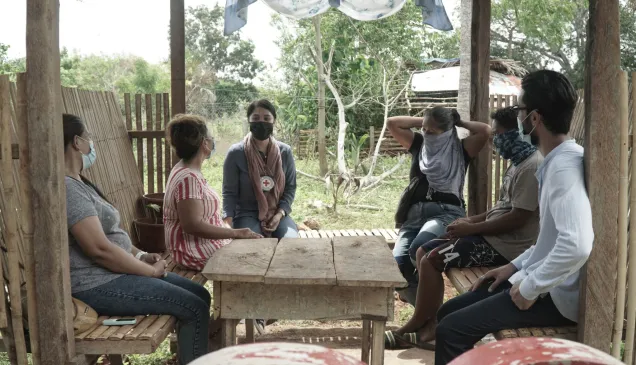Nepal: Partial renovation and retrofitting project completed
Mr Himnath Dawadi, Director General of the Prison Management Division, the jailor and other officials responsible for Dilli Bazaar prison were joined by the ICRC's Kathmandu delegation at a handover ceremony following completion of a partial renovation and retrofitting of the prison.
The programme of works at the detention centre – at 160 years one of the oldest prisons in Nepal – had been commissioned by the Nepalese Department of Prison Management after an initial assessment by the ICRC.
The ICRC's head of Kathmandu delegation, Dragana Kojic, recalled that many structures in Nepal were critically affected by the devastating 7.8 magnitude earthquake that struck the country on 25 April 2015, followed by numerous powerful aftershocks.
Describing how the project came about, she said: "The discussions between the ICRC and the Department of Prison Management led to an assessment of seven prisons in the country. After further consultations, the ICRC agreed to support the renovation of weak structures at Dilli Bazaar prison for the benefit and safety of detainees."
Dragana also explained that the ICRC, in various parts of the world, works with detention authorities: "One of the ICRC's aims is to ensure adequate conditions of detention, including the safety of detainees."
A commendable job
Mr Himnath Dawadi affirmed that the ICRC had done a commendable job and thoroughly deserved the thanks of both the authorities and inmates. He said: "Dilli Bazaar prison was one of the most vulnerable detention centres, especially after the earthquake had left inmates living in fear. By its work under this project the ICRC has been successful in helping to improve the safety of this prison."
He added: "The renovation work stands out clearly as the building is old, and working here has not been an easy task. In my visits during the retrofitting I was extremely impressed by the hard work of the ICRC team."
The project, entitled 'Partial Renovation and Retrofitting', was undertaken to cover some of the prison's immediate needs. Major works included fitting steel structures in order to strengthen the walls; installing concrete panel boards; critical repairs to masonry; and supplementary electrical works. While the works carried out have enhanced the load bearing capacity of the structure, they remain a temporary solution until such time as the authorities can carry out a much-needed complete renovation of the building.



